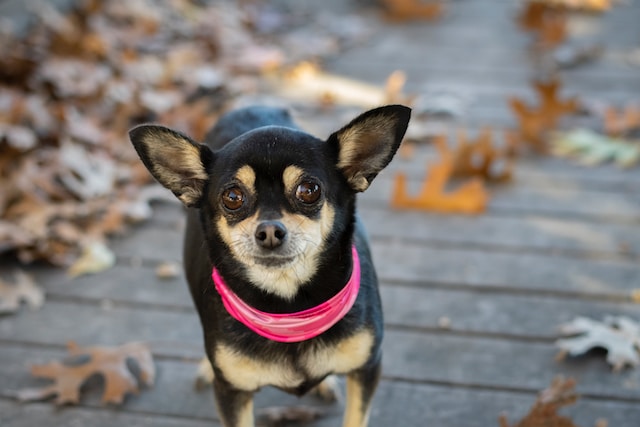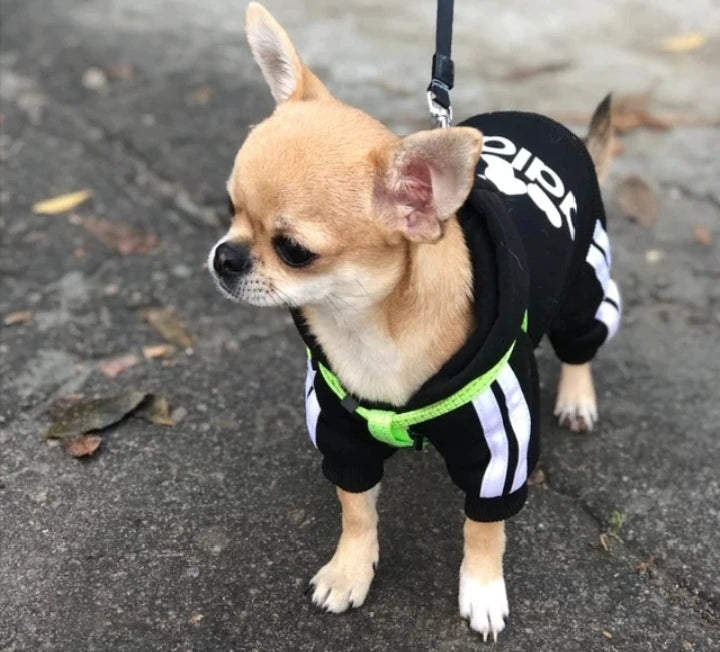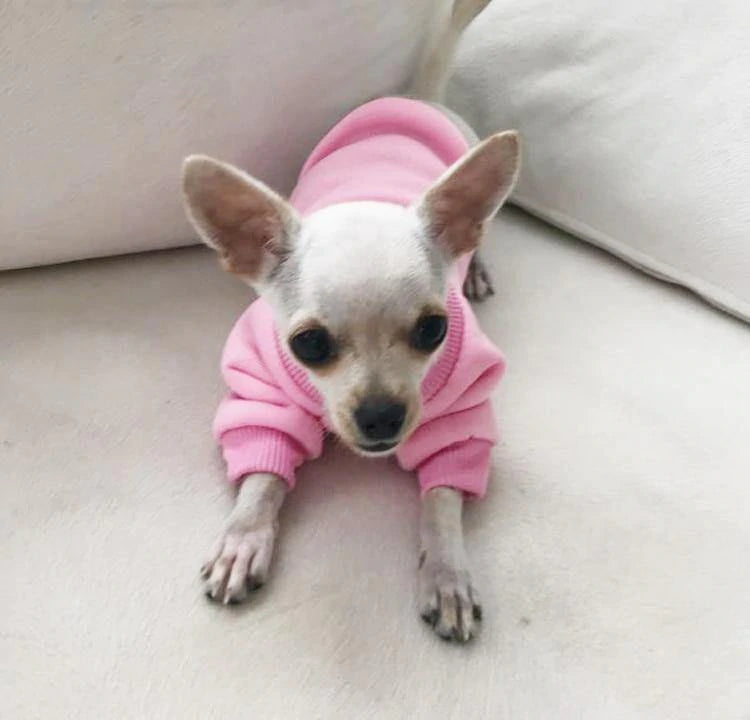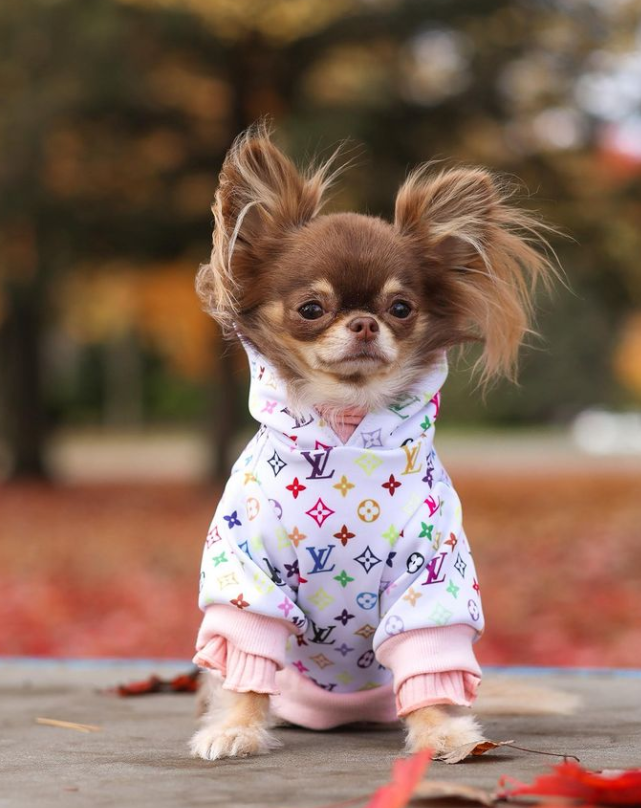If you’re considering bringing a tiny Chihuahua to your home, then you have to know the following. Chis can be prone to allergies, so it’s essential to know how to recognize the symptoms on time. Since early treatment can prevent your dog from further complications, we decided to introduce you to all the facts related to allergies in Chihuahuas.
Common Allergens for Chihuahuas
As a dog owner, you want only the best for your pet. However, sometimes, unplanned situations can happen. According to statistics, smaller dog breeds such as Chihuahuas, Dachshunds, and Yorkie puppies have a higher tendency to suffer from allergies.
Food-related allergens:
Just like we might have a peanut or shellfish allergy, Chihuahuas can be allergic to certain proteins or grains. Ingredients like beef, chicken, or even dairy can trigger an allergic reaction in some pups. Besides by-products, artificial flavors, and colors and additives are often some of the most common allergy triggers.
Environmental allergens:
Pollens, dust mites, or even mold spores can turn a normal day into a sneezing fest for our tiny friends. Therefore, it’s very important to choose eco-friendly house cleaning chemicals and often clean your pet’s beds. If your dog is allergic to dust, removing carpets from your home will help a lot.
Flea and tick allergies:
It only takes one bite from these pests to start an itch-fest. Flea saliva is a common allergen among dogs, especially Chihuahuas.

Symptoms of Allergies in Chihuahuas
If you think your Chi might be allergic to something, keep an eye out for:
Skin-related symptoms:
Redness, hives, or a rash can be a clear sign. And if they’re constantly scratching? It’s a telltale symptom.
A Chihuahua that suffers from allergy can also start licking its paws to blood. Note that this can lead to severe paw issues and even infections if you leave it untreated.
Redness of the ears and itchiness often point out to an allergy. So, if you notice any strange behavior in your Chi, it’s important to react fast.
Respiratory symptoms:
Sneezing, coughing, or even wheezing can indicate an allergy. Allergies in Chihuahuas can also be followed by watery eyes and swollen eyelids. Just like humans, our dogs can also deal with breathing issues due to allergies. Therefore, it’s very important to visit your vet with the first signs.
Digestive symptoms:
Vomiting or diarrhea after meals might be a sign of a food allergen. These symptoms often point out to food intolerance which can be very unpleasant both for you and your Chi. In case of constant vomiting and diarrhea, your dog can quickly dehydrate and lose body fluids. If they last for more than 24 hours, then you’ll have to put your pet on a special diet.
Allergy Testing in Chihuahuas
Just like in humans, allergy testing in Chihuahuas is designed to identify specific substances or allergens causing allergic reactions in your pet. Here’s a brief overview of how the process typically looks:
Veterinary Consultation:
Before any testing, the vet will conduct a thorough physical examination of your Chihuahua. This includes reviewing the dog’s medical history and understanding the onset and nature of the symptoms.
Blood Testing:
One common method of allergy testing is a blood test, often referred to as serologic allergy testing. The vet takes a blood sample and tests it for a reaction to specific allergens, ranging from food to environmental substances. It measures the amount of antibodies (typically IgE) produced in response to these allergens.
Intradermal Skin Testing:
Another common method, especially for environmental allergies, is intradermal skin testing. This involves injecting small amounts of potential allergens under the dog’s skin, typically in a shaved area, to see if there’s a reaction. If the dog is allergic to one of the substances, a small raised bump (much like a mosquito bite) will appear within a certain time frame.
Food Elimination Diet:
If food allergies are suspected, the vet may recommend an elimination diet. This means feeding your Chihuahua a novel or hydrolyzed protein diet (a protein source they have never consumed before) for a set period, often 8-12 weeks. If symptoms improve, you’ll reintroduce regular foods one by one to pinpoint the allergen.

Results and Treatment Plan:
Once the testing is completed, the veterinarian will discuss the results with you. If specific allergens are identified, the vet will recommend a comprehensive treatment plan. This might include avoiding certain allergens, medications, or even allergy shots.
Treatment Options of Allergies in Chihuahuas
Dietary Adjustments
If a food allergy is detected:
- Transition to hypoallergenic or limited-ingredient diets.
- Introduce novel proteins or specific carbohydrates the dog hasn’t been exposed to before.
Medications for treating allergies in Chihuahuas
Depending on the severity and type of allergy, the vet might recommend:
- Antihistamines such as Benadryl can help in easing allergic reactions.
- Steroids can help in more severe skin reactions, but these should be used with caution due to potential side effects.
Topical treatments:
Ointments or medicated shampoos to soothe irritated skin can help a lot in treating allergies in Chihuahuas.Vets usually recomment applying coconut oil on irritated areas and oatmeal baths. Here is the recipe on how you can make an oatmeal bath:
Ingredients:
1 cup of plain oatmeal (Avoid flavored or added sugars. The simpler, the better!)
4-5 cups of warm water (Ensure it’s comfortable for your dog, not too hot or cold)
Instructions:
Blend the Oatmeal:
Start by taking that plain oatmeal and grinding it into a fine powder. You can use a blender or food processor for this. You want it as smooth as possible so it’ll dissolve easily in water.
Fill the Tub:
Begin filling your bathtub (or a basin, depending on the size of your dog) with warm water. Remember, it should be lukewarm, similar to what you’d use for a baby.
Add the Oatmeal:
Slowly sprinkle and stir in your powdered oatmeal. Swirl it around until it’s mixed well, and the water gets a milky appearance.
Bath Time!
Gently place your dog in the tub. Let them soak for about 10-15 minutes. While they’re soaking, you can use a cup to pour some of the oatmeal-infused water over parts of them not submerged, especially if they seem itchy. Rinse your Chi after a pleasant bath.
Dry and Cuddle:
Once done, wrap your dog in a soft towel and give them a gentle rub-down. They’ll probably be feeling super relaxed, so it’s the perfect time for post-bath cuddles.
Allergy Shots (Immunotherapy)
If the allergen is known and cannot be avoided, vets might recommend immunotherapy. This involves administering a series of shots with small amounts of the allergen to reduce sensitivity over time.
Environmental Adjustments
For environmental allergens:
- Regularly cleaning the dog’s living environment.
- Using air purifiers or humidifiers.
- Limiting outdoor time during high pollen counts.
To protect your Chihuahua from environmental allergens such as dust, insect bites, or pollen, you can dress it in lightweight and cozy clothes. Our clothes for Chihuahuas are carefully made to suit their bodies and support their everyday activities.
How clothes can help protect your Chihuahua from allergies?
Protection from Sun Allergies:
Some pups might be sensitive or allergic to excessive sunlight. Doggy clothes, particularly those designed to shield against UV rays, can provide essential protection during those sunny day walks, ensuring your Chihuahua can enjoy their playtime safely.
Barrier Against Environmental Allergens:
Clothes act as a primary defense layer against multiple environmental allergens like pollen, mold, and dust. By covering significant portions of your Chihuahua’s body, clothes minimize direct contact with these potential irritants.
Preventing Excessive Grooming and Scratching:
Itchy skin due to allergies often leads to excessive grooming and scratching. Clothing can act as a gentle barrier, preventing your pup from injuring themselves, and allowing irritated skin a chance to heal without constant interference.
Deterrent to Pests:
Clothing can serve as an additional deterrent to pests like fleas and ticks, which might cause allergic reactions. While clothes are not a substitute for vet-approved flea and tick preventatives, they can add an extra layer of defense, especially during outdoor activities.
Adidog Hoodie is one of our favorite picks for the chilly weather that covers a great part of your dog’s body. Featuring long sleeves, this jumpsuit will keep the allergens off your dog’s skin.

Chihuahua Everyday Hoodie is one of the best-selling items from our shop. Since it’s made from cotton, your pet will enjoy wearing it even during playtime.

For dog owners who pay attention both to their dog’s style and comfort, the ChicCanine Cozy Hoodie will be the perfect pick. This Chihuahua hoodie’s design is inspired by one of the most luxurious bands in the world, so your pooch will catch everyone’s eye.

Flea Control
Flea allergies are common among many breeds.
Ensure:
- Regular flea treatments are administered.
- Immediate treatment at the first sign of a flea infestation
Medications for relief:
- From antihistamines to steroids, there’s a spectrum of medications that can bring relief.
Natural remedies and holistic approaches:
Aloe vera gel for skin relief or even certain dietary supplements can work wonders.
Allergies in Chihuahuas: Wrapping up
We all agree that allergies can severely affect our dogs’ quality of life. That’s why early treatment is important. The earlier you catch some strange and unusual behavior in your dog, the better are chances for quick recovery and treatment.


11 thoughts on “Allergies In Chihuahuas: Reasons & Treatment”